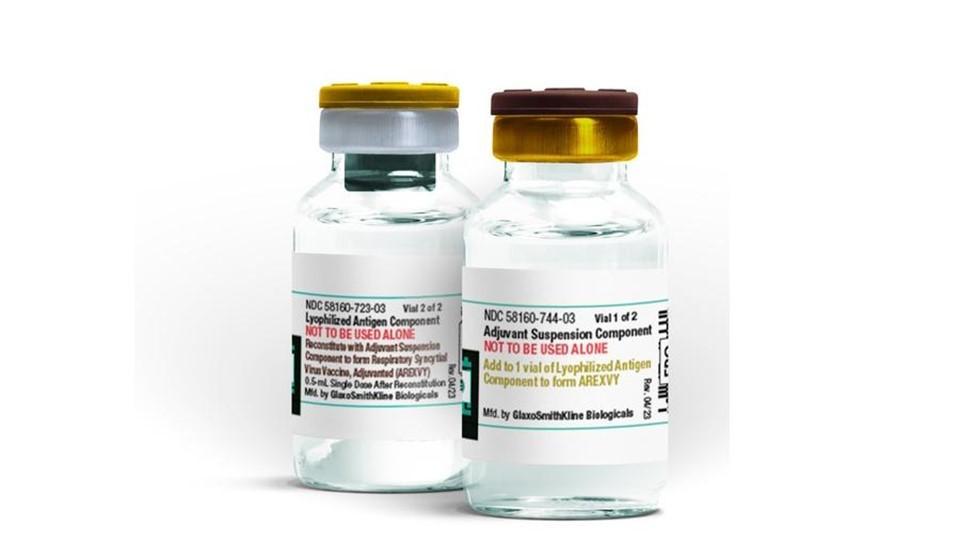Advancements in early detection and innovative therapies targeting tau pathology

Alzheimer’s disease (AD) robs millions of individuals of their memories, cognitive function, and independence, placing an immense emotional and financial burden on families and healthcare systems worldwide.1 Characterised by the abnormal accumulation of two proteins, amyloid beta and phosphorylated tau (pTau), AD progresses insidiously, with patients living with the disease for many years before showing any symptoms.2
Due to the lack of understanding of AD’s definitive cause and associated biomarkers, clinicians rely on complex, correlative methods to determine disease progression. They perform invasive tests, such as lumbar punctures, to analyse cerebrospinal fluid (CSF) or costly positron emission tomography (PET) brain scans. These methods are only useful in identifying the disease once symptoms have progressed to higher stages, leading to a diagnosis that comes too late and deprives patients of the benefits of early intervention.3
With limited options for patients with AD, there is a critical need to advance novel therapies that may halt or reverse disease progression. To do so will require better diagnostic tools, such as blood-based tests, that can identify patients earlier, before the onset of cognitive decline.4 These tests may improve clinical trial patient recruitment and therapy evaluation, increasing the likelihood of developing successful disease-modifying treatments. They also have the potential for being more accessible and cost-effective than CSF analysis and PET scans.5
Blood-based p217tau assay: A breakthrough in early detection
Compared to traditional AD diagnosis methods, blood tests can be minimally invasive, cost-effective, and more accessible.3 Research has demonstrated that biochemical changes can be detected up to 20 years before the onset of symptoms, and one of these changes is the hyperphosphorylation of the tau protein.4 This is thought to lead to the aggregation and spread of tau tangles through the brain.5 With approximately 30% of proteins in eukaryotic cells being subject to phosphorylation, it is critical to select a precise epitope to measure.6 Differently phosphorylated fragments of tau can be detected in the blood, but previous assays were not sensitive enough to measure changes in the earliest stages of disease.7
Researchers are now focused on testing for a promising blood-based biomarker, p217tau. Plasma p217tau appears in early stages of AD and shows a strong correlation with amyloid deposits, tau tangles, cognitive decline, and brain atrophy. Tests that identify the presence of p217tau in blood plasma can detect amyloid pathology with over 90% accuracy, meeting revised criteria for diagnostic biomarkers, published by the Alzheimer’s Association in light of the latest science and test capabilities.8,9 P217tau has emerged as a top performing biomarker for AD, enabling clinical sensitivity and specificity in blood,10 with a cohort of p217tau assays outperforming other leading assays for detecting amyloid pathology.11 Large-scale trials have also demonstrated that the use of a p217tau assay as a pre-screening tool increased the efficiency of identifying suitable candidates for trials.12
At J&J, we are integrating our proprietary assay that measures p217tau levels to our clinical research. Studies have demonstrated that the assay is highly sensitive and can predict patients’ AD status with 91% accuracy.13
The FDA’s recent breakthrough designations and approvals of AD blood-based tests for clinical research highlight the critical need and appetite for non-invasive testing methods that can aid in AD diagnosis and improve patient enrolment in clinical trials.14 With several assays to measure tau pathology available, we are also one step closer to integrating blood-based biomarkers into routine clinical practice, and not just clinical trials.
Addressing an urgent global need: From diagnosis to effective treatments
The global burden of AD is staggering, with an estimated 55 million people worldwide living with the disease. While advancements in diagnostics are helping enable early identification of patients at risk of AD, there remains a critical need for effective therapeutic solutions to halt or potentially reverse disease progression.15 Supported by the power of early detection, various innovative therapies are in development to provide solutions for patients identified with elevated tau levels or at risk of AD. Over the past couple of years, we have seen disease-modifying therapies for AD approved by the US FDA, with many others in development.16
One key development is monoclonal antibody targeting of p217tau, which is being investigated for early AD treatment. Ongoing studies are examining whether it can slow the spread of tau pathology and the progression of AD symptoms. For example, in collaboration with AC Immune, J&J is also exploring active immunotherapy to potentially induce the body to produce antibodies against pathological tau and ultimately prevent disease progression in preclinical patients who have no cognitive symptoms.
The ripple effect of early detection
The promise of blood-based tests and biomarkers like p217tau represents a transformative advancement in AD diagnosis and treatment. By identifying AD pathology before cognitive decline begins, we can improve clinical trials, intervene earlier, possibly slow disease progression, and enhance the quality of life for millions of individuals affected by this devastating condition.17
Reference List
- WHO. Dementia. Available at: https://www.who.int/news-room/fact-sheets/detail/dementia. Last accessed: August 2024.
- Porsteinsson AP, et al. Diagnosis of Early Alzheimer's Disease: Clinical Practice in 2021. J Prev Alzheimers Dis. 2021;8(3):371-386. doi: 10.14283/jpad.2021.23.
- Khan, S., et al. (2020). Recent Advancements in Pathogenesis, Diagnostics and Treatment of Alzheimer’s Disease. Current Neuropharmacology, 18(11), 1106-1125. https://doi.org/10.2174/1570159X18666200528142429
- Pais M, et al. Early diagnosis and treatment of Alzheimer's disease: new definitions and challenges. Braz J Psychiatry. 2020 Aug;42(4):431-441. doi: 10.1590/1516-4446-2019-0735.
- Angioni D, et al. Blood Biomarkers from Research Use to Clinical Practice: What Must Be Done? A Report from the EU/US CTAD Task Force. J Prev Alzheimers Dis. 2022;9(4):569-579. doi: 10.14283/jpad.2022.85.
- Schindler SE, et al. Using Alzheimer's disease blood tests to accelerate clinical trial enrollment. Alzheimers Dement. 2023 Apr;19(4):1175-1183. doi: 10.1002/alz.12754.
- Georgakas, J. E., et al. Biomarkers in Alzheimer's disease: past, present and future. Biomark Med. 2010 Feb;4(1):15-26. doi: 10.2217/bmm.09.86.
- Gong, C.-X., & Iqbal, K. (2008). Hyperphosphorylation of microtubule-associated protein tau: a promising therapeutic target for Alzheimer disease. Curr Med Chem. 2008;15(23):2321-8. doi: 10.2174/092986708785909111.
- R&D Systems. Methods for detecting protein phosphorylation. Available at: https://www.rndsystems.com/resources/articles/methods-detecting-protein-phosphorylation. Last accessed: August 2024.
- Arbaciauskaite, M., et al. High-specificity antibodies and detection methods for quantifying phosphorylated tau from clinical samples. Antib Ther. 2021 Feb 15;4(1):34-44. doi: 10.1093/abt/tbab004.
- Sexton, C. E., et al. (2024). Novel avenues of tau research. Alzheimer's & Dementia, 20(3), 2240-2261. https://doi.org/10.1002/alz.13533.
- Nature. Blood Biomarkers Promise to Revolutionize Alzheimer’s Diagnosis. Available at: https://www.nature.com/articles/d42473-024-00030-5. Last accessed: August 2024.
- Brum WS, et al. A two-step workflow based on plasma p-tau217 to screen for amyloid β positivity with further confirmatory testing only in uncertain cases. Nat Aging. 2023;3(9):1079-1090
- Schindler SE, Petersen KK, Saef B, Tosun D, Shaw LM, Zetterberg H, Dage JL, Ferber K, Triana-Baltzer G, Du-Cuny L, Li Y, Coomaraswamy J, Baratta M, Mordashova Y, Saad ZS, Raunig DL, Ashton NJ, Meyers EA, Rubel CE, Rosenbaugh EG, Bannon AW, Potter WZ. Head-to-head comparison of leading blood tests for Alzheimer's disease pathology. medRxiv [Preprint]. 2024 Jul 3:2024.06.12.24308839. doi: 10.1101/2024.06.12.24308839.
- Hansson O, Blennow K, Zetterberg H, Dage J. Blood biomarkers for Alzheimer's disease in clinical practice and trials. Nat Aging. 2023 May;3(5):506-519. doi: 10.1038/s43587-023-00403-3. Epub 2023 May 18.
- Triana-Baltzer G, et al. Developing robust plasma ptau217 assays for use in Treatment Trials and in
the Clinic. 2024 AAIC Annual Meeting. Abstract #94604 - Fierce Biotech. 2024 Alzheimer's Blood Tests from Roche and Eli Lilly Nab FDA Breakthrough Tags. Available at: https://www.fiercebiotech.com/medtech/alzheimers-blood-test-roche-eli-lilly-nabs-fda-breakthrough-tag. Last accessed: August 2024.
- Bennet LP. Early Diagnosis of Alzheimer's Disease: Clinical and Economic Benefits. Journal of the American Geriatrics Society. 2003 Jun 51;5(2):281-288. doi: https://doi.org/10.1046/j.1532-5415.5153.x.
- Huang LK, Kuan YC, Lin HW, Hu CJ. Clinical trials of new drugs for Alzheimer disease: a 2020-2023 update. J Biomed Sci. 2023 Oct 2;30(1):83. doi: 10.1186/s12929-023-00976-6.
- van der Flier, W. M.,et al. Towards a future where Alzheimer’s disease pathology is stopped before the onset of dementia. Nat Aging 3, 494–505 (2023). https://doi.org/10.1038/s43587-023-00404-2













